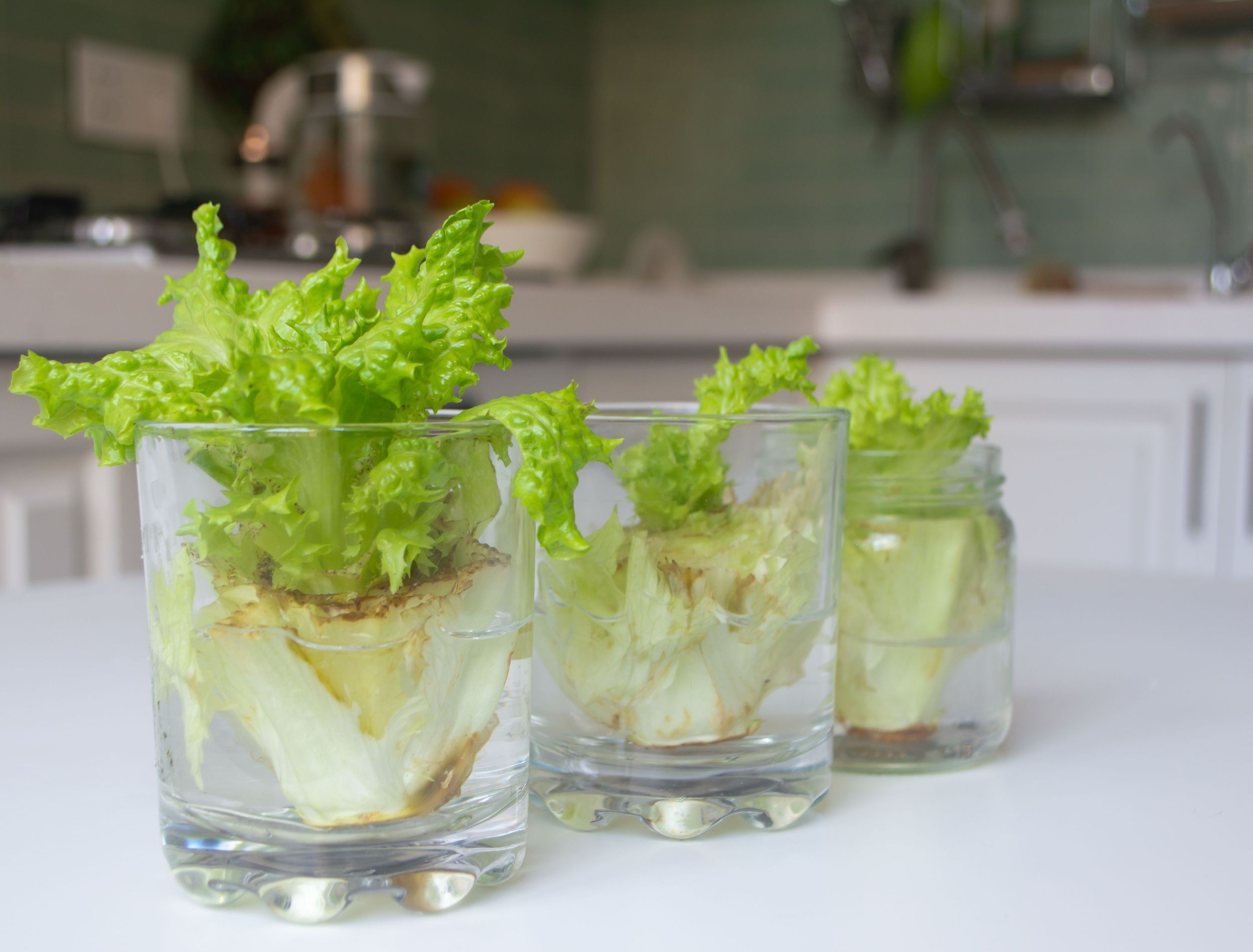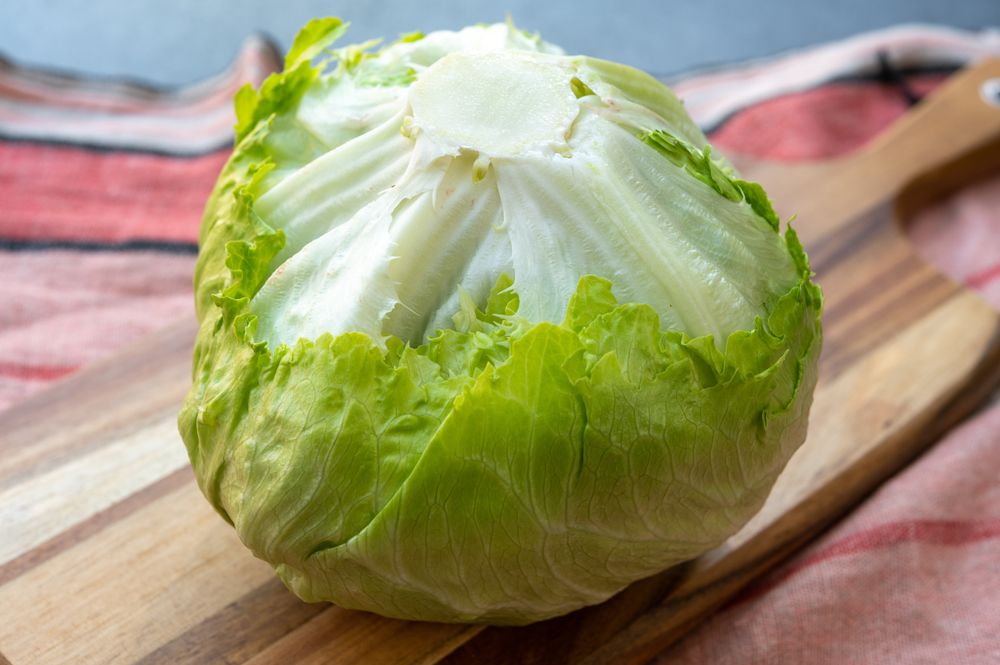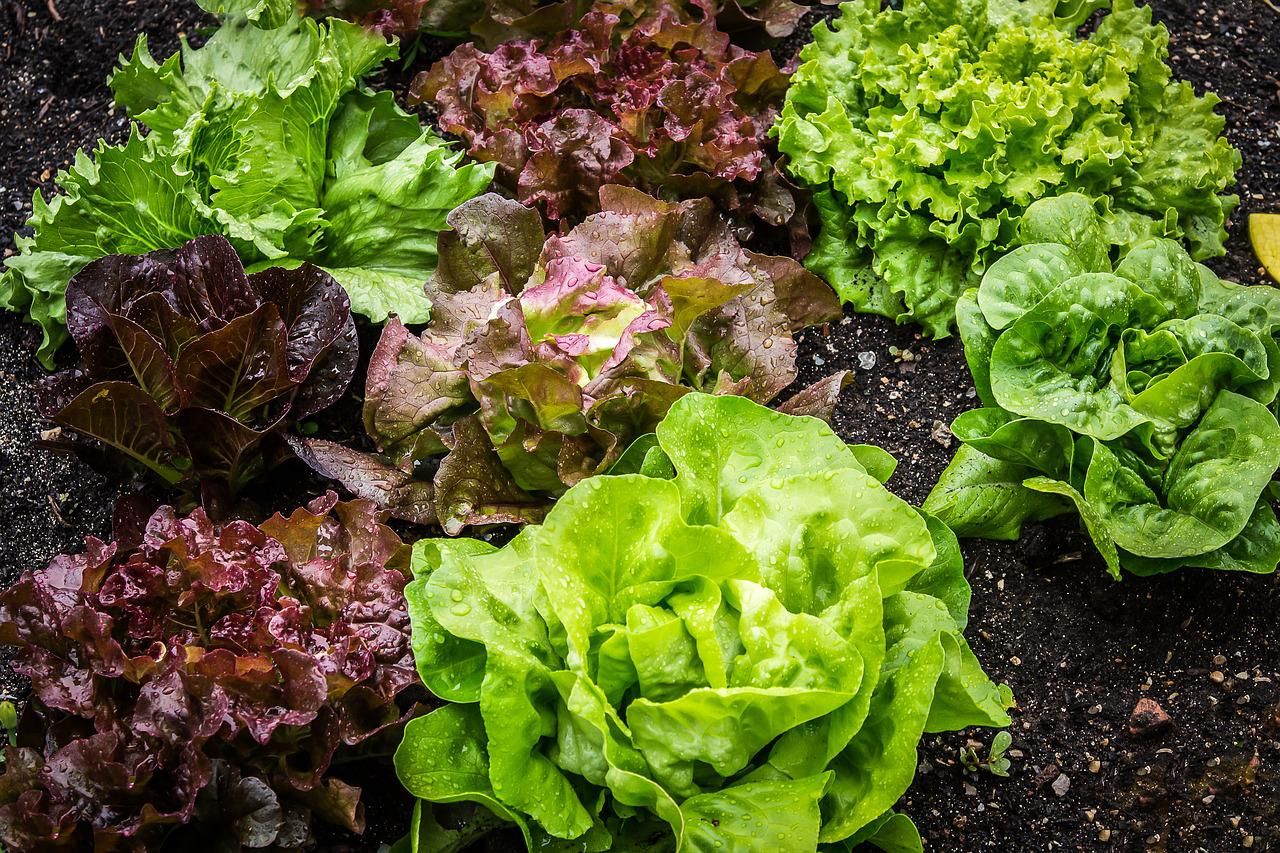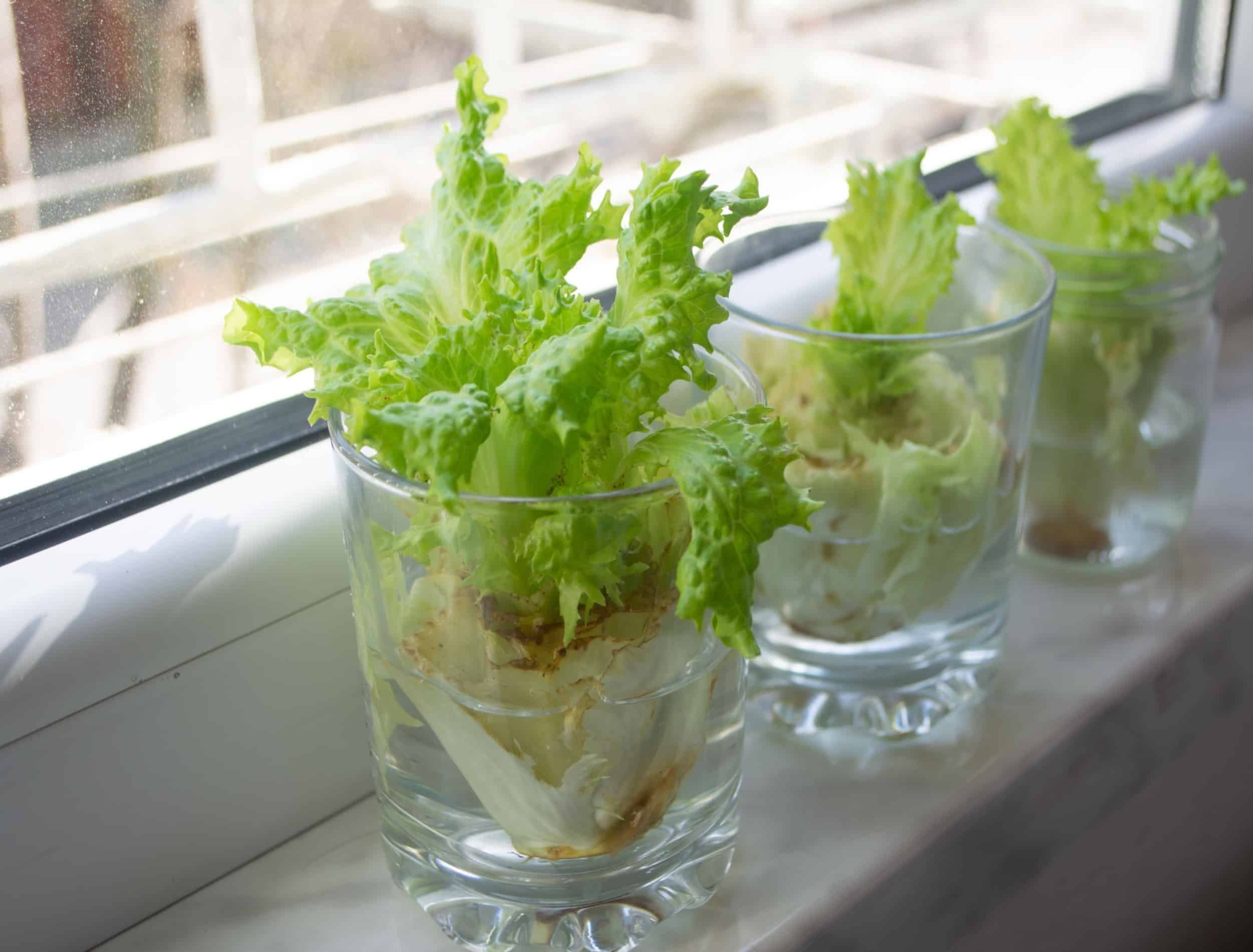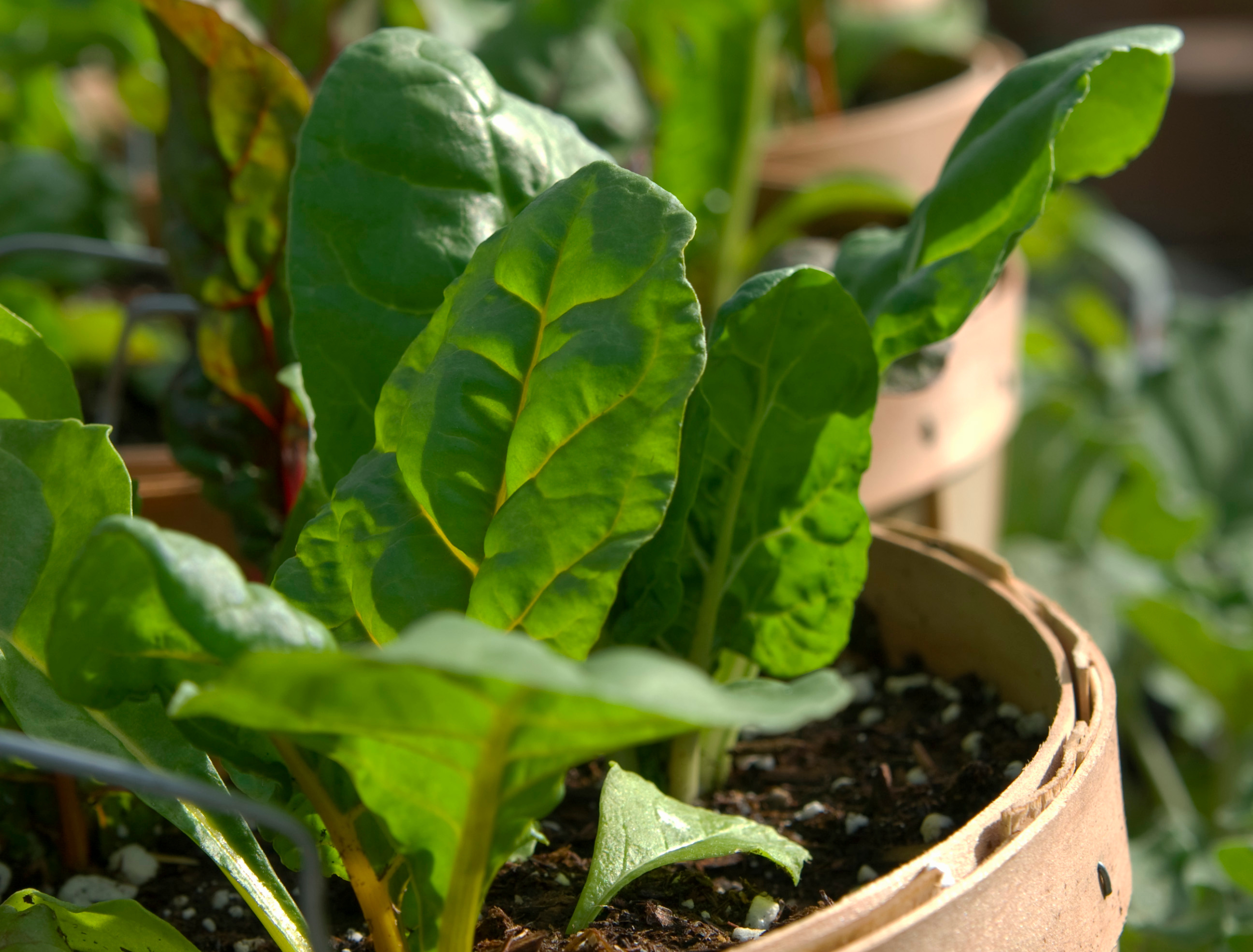Lettuce is a popular addition to many meals and boasts numerous nutritional benefits. That said, fresh veggies can add up on your grocery bill. Fortunately, growing your own lettuce is a rewarding, cost effective solution. And once you harvest your lettuce, you can actually use the scraps to grow more!
Learn how you can regrow lettuce from scraps, whether you source them from your grocery store or garden. This way, you'll always have fresh greens ready to go and also cut down on your home food waste. This method will not only save you time and space but, it can be done indoors on a windowsill. Learn more below!
Tools You'll Need
Image credits: barmalini via Shutterstock
Before you get to regrowing lettuce from scraps, there are a few tools you’ll need to gather.
- Lettuce scraps with the stalk intact
- Clear glass container or mason jar
- Clean water
- Toothpicks
- Sunlight or grow lights
- Well draining soil
- Plant pot
- Pruning shears
Growing Lettuce From Scraps
With the right tools in tow, learn how you can regrow lettuce from scraps with this step-by-step guide.
Step 1: Choose a Container and Lettuce Variety
Image credits: maxmann via Pixabay
When looking for lettuce varieties, it makes sense to regrow your personal favorites. That said, lettuce that comes in an intact bunch or head will work, rather than individual leaves, which won't develop roots and regrow. Romaine, bok choy, and iceberg are popular because they're delicious, but they're also long lasting and stable in comparison to spinach, for example.
Once you have your variety picked out, you can get to regrowing once you've used up the leaves. Pick from your plant as you please adding the veggie to salads or sandwiches!
Start by washing and drying the leftover lettuce head and then remove the last outer leaves. Cut the leaves off about 1 to 2 inches away from the base of the stem. Use the leaves as you please and put the stem to the side.
Now you're onto choosing a container for your soon to be lettuce head. Take a shallow dish, but you can also use a deeper glass or mason jar and secure the lettuce in place with toothpicks. Fill the container with clean water, such as rainwater collected from a barrel, making sure the base of the stem is submerged -- The water should cover about half the stem.
If you're container is too deep, use the toothpicks to your advantage to hold the lettuce up.
Step 2: Watering and Placement
Image credits: Mehriban A via Shutterstock
Providing ample sunlight is essential when regrowing lettuce. Either place your container in a spot that receives at least eight hours of sunlight per day or place it under a grow light and supplement 12 to 14 hours of light per day. The stem will develop roots in the water and new leaves above water over the next eight to 12 days. Never cover the container as this may result in mold growth.
Make sure you change the water out daily to ensure the plant always has a clean and fresh drink. Otherwise, bacteria and fungus may build up, damaging the health of the plant and resulting in failure to regrow.
Step 3: Replant and Let it Grow
Image credits: Funwithfood via Canva
You can either allow the lettuce to continue to grow in the container with water, or transplant it into a container that is 6 inches wide and deep with a drainage hole and well draining soil. To replant, fill your pot about two thirds with soil and place the base of the stem on top. Add more soil, ensuring you cover the new root system but that the new leaves are above the soil line. Water the plant right away and keep the soil moist as it grows.
While the plant is growing, the lettuce may bolt. This means that it is developing seeds before the plant is ready to harvest, resulting in a bitter taste and brown spots. Hot temperatures and dry weather can lead to bolting, so make sure your lettuce sits in temperatures around 60 to 65 degrees Fahrenheit and remains well-watered.
Step 4: Harvesting Lettuce
Image credits: Angurt via Shutterstock
Generally, it's time to harvest your lettuce in another eight to 12 days when the leaves are about six inches long, though this may differ depending on the variety. Either use a clean and sharp knife or a pair of pruning shears to remove the leaves from the base of the stem.
A single stem can only provide one good harvest, so it is time to dispose of it once you remove the leaves. You can add it to your compost pile, which boasts endless possibilities ranging from compost tea to mulch.
No Lettuce Seeds? No Problem!
While there are many vegetables you can regrow from scraps, such as potatoes, lettuce requires only a few tools and very little attention to thrive. It is the best way to save your scraps and add to your meals without spending any extra money or taking up space in your garden.
Do you have any tips for growing lettuce from scraps? Share in the comments below!

